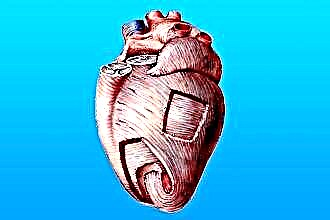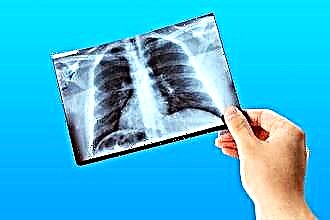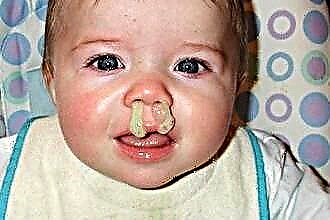What it is
 Heart failure (hereinafter HF) Is a disease in which the heart, due to impaired pumping function, becomes unable to provide the tissues of the human body with a sufficient amount of blood. As a result, the body lacks oxygen and nutrients, which is manifested by the corresponding symptoms and complaints.
Heart failure (hereinafter HF) Is a disease in which the heart, due to impaired pumping function, becomes unable to provide the tissues of the human body with a sufficient amount of blood. As a result, the body lacks oxygen and nutrients, which is manifested by the corresponding symptoms and complaints.
Causes of heart failure
The following causes of heart failure are distinguished:
- The main ones (they account for 75-85%):
- cardiac ischemia;
- arterial hypertension.
- Less frequent (15-25%):
- cardiomyopathy (damage to the heart muscle as a result of the toxic effects of alcohol, chemical compounds, as well as hereditary changes in the structure of the organ);
- inflammatory heart disease: endocarditis, myocarditis.
- Rare (up to 5% of all cases):
- pericardial disease;
- rhythm and conduction disturbances;
- connective tissue diseases:
- systemic lupus erythematosus;
- scleroderma;
- dermatomyositis;
- systemic vasculitis;
- sarcoidosis;
- pathology of the neuroendocrine system:
 diabetes;
diabetes;- changes in thyroid function (hyper-, hypothyroidism);
- adrenal gland disorders:
- pheochromocytoma;
- Cohn's syndrome;
- Addison's disease;
- pathology of the pituitary gland and hypothalamus;
- obesity;
- chronic lung disease;
- metabolic disorders;
- tumors of different localization;
- malformations of the cardiovascular system in newborns;
- irradiation and therapy with aggressive medications;
- pregnancy.
How the disease develops: pathogenesis and its mechanisms
Given the wide variety of causes of heart failure, there are different options for its development. In the table below, we have described all the major changes in the heart muscle that lead to HF. There are also indicated diseases that lead to disturbances in the structure of the myocardium.
| Pathophysiological cause | Mechanism | What pathologies are typical for and why |
|---|---|---|
| Overload of the left ventricle (hereinafter LV) volume | In diastole (a period of relaxation of the heart), there is an excess amount of blood in the LV, which leads to dilatation (overstretching) of its walls | Aortic insufficiency, impaired renal function |
| LV resistance overload | The emergence of an obstruction to the blood flow from the left ventricle. To overcome it, the heart needs to contract more strongly, which leads to wear and tear of the myocardium. | Arterial hypertension, aortic stenosis |
| Primary myocardial injury | Cardiomyocytes, due to a violation of their structure, cannot provide the normal pumping function of the heart | Ischemic heart disease: myocardial infarction and scars after it, angina pectoris and hibernation (a transient state of "sleep" of cardiomyocytes after a violation of their blood supply) |
| Violation of left ventricular or right ventricular filling | The period of relaxation of the heart is shortened, the blood does not have time to completely fill the chambers of the heart. Because of this, a volume is pushed out in the systole, which is less than planned. | Tachycardia (due to an increase in the frequency of heart contractions per minute, diastole naturally decreases - the interval between them); pericarditis, atrioventricular stenosis, tumor (mechanical obstruction to blood flow), concentric hypertrophy (characteristic of arterial hypertension) |
| Increased metabolic requirements of tissues | Heart cells weaken from oxygen and energy hunger | Hypoxia, anemia, chronic pulmonary diseases (impaired blood oxygen saturation in the capillaries of the lower respiratory tract), increased metabolic activity (with hyperthyroidism, pregnancy) |
And to summarize, the occurrence of heart failure can be summarized in several points:
 some specific reasons violate the structure of the muscle tissue of the heart or set unbearable tasks for it;
some specific reasons violate the structure of the muscle tissue of the heart or set unbearable tasks for it;- healthy cells begin to "plow" for three to meet the body's needs for blood;
- for some time, active cardiomyocytes save the situation, which does not allow the symptoms of the disease to appear (this is called the stage of compensation);
- after a certain period of time, the work of the heart is disrupted and the person enters the decompensation phase, when the signs of HF become obvious.
Classification, types and functional classes of heart failure
Based on the mechanism of development of the disease, there are:
- systolic variant - due to myocardial dilatation, the contractility of the heart muscle is impaired;
- diastolic option - due to hypertrophy of cardiomyocytes, they lose the ability to fully relax.
According to the rate of development, the disease is divided into:
- acute HF - develops within a few days, hours;
- chronic heart failure is a slowly progressive variant, symptoms increase over several years.
Heart failure is classified according to the degree of decrease in left ventricular function (by ultrasound) into:
- HF with LV systolic dysfunction (ejection fraction is less than 45%);
- HF with preserved LV activity (EF exceeds 45%).
The most important in practice is the classification of CH by functional classes. It allows you to clearly control the dynamics of the patient's condition and the effectiveness of the therapy used.
CH functional classes:
| Class | Conditions for the onset of symptoms: shortness of breath, fatigue, palpitations |
|---|---|
| І | Occurs with intense physical activity |
| II | Appears in the case of a habitual level of physical activity (necessary to continue life in a normal rhythm) |
| ІІІ | With minimal physical effort (difficult to attend to yourself, walk around the room) |
| IV | In a state of complete rest |
This classification is dynamic, the patient may move to a higher class under the influence of treatment.
The degree of heart failure
But the stages of heart failure reflect structural damage to the myocardium, which can no longer be regenerated under the influence of therapy.
Stages of heart failure
| Stage | Circulatory failure | The essence of violations |
|---|---|---|
| І | Initial | At rest, the clinical picture is normal |
| ІІА | Moderate | Only the functioning of the heart (the whole myocardium or its individual parts) is impaired |
| ІІБ | Significant | The entire circulatory system suffers completely |
| ІІІ | Fully decompensated | Severe hemodynamic disturbances lead to irreversible damage to organs and systems |
Symptoms and signs of heart failure
Studying the classifications, the attentive reader has already figured out in his mind the main symptoms of HF. However, these symbolic manifestations are not the only ones for this pathology.
Typical appearance and complaints of the patient
 With severe heart failure, the patient takes a pose codenamed "orthopnea": he sits with pillows. The head and upper back are tilted back slightly. The limbs are down. This position ensures the deposition (accumulation) of blood in the arms and legs, which minimizes the load on the exhausted heart.
With severe heart failure, the patient takes a pose codenamed "orthopnea": he sits with pillows. The head and upper back are tilted back slightly. The limbs are down. This position ensures the deposition (accumulation) of blood in the arms and legs, which minimizes the load on the exhausted heart.
The skin may be pale, with acrocyanosis (blue discoloration of the peripheral parts: the tip of the nose, fingers, ears). Also, congestive edema is characteristic, which:
- are of an ascending nature (first appear on the feet and legs);
- appear in the evening, and in the early stages pass overnight;
- cold and firm to the touch;
- may wear a bluish tint.
There may be ascites (fluid in the abdomen) or even anasarca (swelling all over the body).
Signs of heart failure are manifested by characteristic complaints:
- fatigue (it takes more time to recover from physical activity than before);
- drowsiness (but even normal sleep in the later stages is obtained only in a sitting position);
- shortness of breath (according to functional class);
- cough (often nocturnal);
- nausea and vomiting are possible;
- loss of appetite;
- palpitations;
- dizziness.
Heart rate change
Since the pumping function of the LV suffers, the pulse will often be weakened (the artery wall shudders with a pulse wave with less force) and rapid (more than 90 per minute).
In the presence of arrhythmias, it can accordingly become uneven (beats at different time intervals), slowed down (less than once a second) or even be in deficit (when the pulse rate does not correspond to the number of heartbeats in an equal time).
How does blood pressure behave in heart failure?
In a situation where the phenomenon of HF is preceded by hypertension, high blood pressure figures are characteristic. But in acute conditions, intoxications, heart failure can be accompanied by hypotension and even shock or collapse (a critical decrease in blood pressure).
Methods for diagnosing the disease
Interview and general examination of the patient: how to recognize the disease?
 During the survey, special attention should be paid to such symptoms of heart failure as excessive fatigue and shortness of breath, a feeling of shortness of breath during physical exertion.
During the survey, special attention should be paid to such symptoms of heart failure as excessive fatigue and shortness of breath, a feeling of shortness of breath during physical exertion.
On examination, it is worth paying attention to the position of orthopnea (differential diagnosis with an asthma attack is necessary) and characteristic edema. Swelling and pulsation of the veins in the neck can be found (this symptom is easier to see if the patient is lying on his back).
Symptoms of heart failure on a blood test: are they of value?
HF in a general blood test can manifest itself as anemia (hemoglobin below 120 hl). If you correct it, the blood's ability to carry oxygen will improve, which slightly compensates for the pumping dysfunction of the heart. Hematocrit (the ratio of blood cells to plasma) may increase if severe dyspnea is present.
Such an analysis does not carry diagnostic value.
CH on the cardiogram
Heart failure cardiogram reflects a wide range of disorders. You can register the following deviations:
| The change | Electrocardiographic picture |
|---|---|
| Sinus tachycardia | Normal complexes, but with a frequency of more than 90 per minute |
| Sinus bradycardia | The shape of the teeth meets the standards, but on the electrocardiogram (ECG) less than one beat per second is recorded |
| Atrial fibrillation | Instead of the P wave - small waves, electrical processes in the myocardium of other parts of the heart are not disturbed |
| Ventricular arrhythmia | With a frequency of less than 60 per minute, dilated and deformed ventricular complexes are recorded on the ECG |
| Ischemia or myocardial infarction | In the presence of a pathological Q wave and deviations of the ST segment relative to the isoline |
| LV hypertrophy | Increase in the R wave in the left chest leads, deviation of the electrical axis of the heart to the left |
| Reduced voltage | The recorded complexes are normal, but the height of all teeth is reduced several times |
Ultrasound of the heart as the main method for clarifying the diagnosis
To make a diagnosis of HF, it is necessary to identify a drop in the pumping function of the left ventricle. An ultrasound examination (echocardiography, or EchoKG) will help to assess the hemodynamic processes in the heart. This method is considered the gold standard for diagnosing heart failure.
Some signs of heart failure on echocardiography of the heart
| Sign | The change | Clinical significance |
|---|---|---|
| LV ejection fraction | Decrease (below 45%) | Determines the severity of the patient's condition |
| LV function | Dyskinesia, akinesia, hypokinesia (abnormal movement of the heart muscle) | Indicates a violation of the structure of the myocardium |
| End-diastolic dimension | Increases to 60 mm or more | Indicate volume overload |
| End-systolic dimension | Grows up to 45 mm and above | |
| LV wall thickness | More than 11-12 mm | Hypertrophy. Possibly due to resistance overload |
When performing echocardiography, much more indicators are analyzed. However, those described are the most illustrative.
Additional methods of research of heart failure
The patient can undergo the following instrumental and laboratory studies:
 X-ray of the chest organs (you can see the expansion of the shadow of the heart and the oozing of the parenchyma of the lungs with exudate - the liquid part of the blood);
X-ray of the chest organs (you can see the expansion of the shadow of the heart and the oozing of the parenchyma of the lungs with exudate - the liquid part of the blood);- biochemical blood test (including determination of hormone levels);
- stress echocardiography (the use of a provoking factor will help diagnose hidden disorders);
- magnetic resonance imaging of the heart (parameters of all structures are visualized);
- computed tomography (especially if coronary heart disease is suspected);
- radionuclide ventriculography (to establish the ejection fraction and the level of myocardial blood supply);
- coronary angiography (to determine the degree of patency of the coronary vessels).
Heart failure treatment
The management of a patient with heart failure should begin (if possible) with the elimination of the etiological factor. Otherwise, symptomatic treatment is the first line.
The patient should be recommended food with salt restriction to 5 g per day. As for the drinking regimen, in severe stages, you should not consume more than one liter of fluid per day.
Treatment regimen according to the latest global recommendations
Drugs for the treatment of heart failure
| Group | Representatives | Daily dose (mg) |
|---|---|---|
| Angiotensin-converting enzyme inhibitors | Captopril | 150 |
| Enalapril | 40 | |
| Lisinopril | 60 | |
| Ramipril | 10 | |
| Beta-blockers | Bisoprolol | 10 |
| Carvedilol | 50 | |
| Metoprolol | 200 | |
| Nebivalol | 10 | |
| Mineralcorticoid receptor anagonists | Eplerenone | 50 |
| Spironolactone | 50 | |
| Angiotensinogen receptor blockers | Candesartan | 32 |
| Valsartan | 320 | |
| Losartan | 150 | |
| If channel inhibitor | Ivabradin | 15 |
| Cardiac glycosides | Digoxin | 0,125 |
| Loop diuretics | Furasemide | 150 |
| Torasemid | 15 | |
| Thiazide diuretics | Hydrochlorothiazide | 50 |
| Indapamide | 5 | |
| Anticoagulants | Rivaroxaban | 20 |
| Acetylsalicylic acid | 75 |
The cardiologist selects, according to the recommended technique, a combination of several drugs, based on the characteristics of the course of heart failure in an individual patient.
There are tablets with a combination of several drugs from different groups at once.
HF prevention
Primary: a healthy lifestyle, avoiding nicotine and minimizing alcohol. Treatment of pathologies that can lead to HF. Periodic preventive studies in people at risk.
Secondary: drug correction of the manifestations of heart failure in order to prevent progress and improve the patient's well-being.
Tertiary: rehabilitation of the patient.
Patient prognosis: is it possible to influence the patient's outcome and how to do it?
 Since HF is often a manifestation of an extreme degree of negative influence on the heart of any factor, the prognosis is disappointing: a person will not be able to recover completely. But well-chosen therapy will prevent possible complications, increase life expectancy, and even improve the quality of life.
Since HF is often a manifestation of an extreme degree of negative influence on the heart of any factor, the prognosis is disappointing: a person will not be able to recover completely. But well-chosen therapy will prevent possible complications, increase life expectancy, and even improve the quality of life.
HF occurs against the background of some kind of disease, complicating it. For example, a stroke with hypertension is terrible in itself, and even more so in combination with HF decompensation. So the prognosis also depends on the degree of control of concomitant pathologies.
Conclusions
Heart failure can affect anyone of any age. It is so serious that it is the reason for registering a disability (starting with the second degree).
Cardiac dysfunction is manifested by edema (by the gyrostatic mechanism and due to lymphostasis), shortness of breath and decreased exercise tolerance.
To prevent HF, you need to adhere to the principles of a healthy lifestyle, and not sporadically, but from young years to getting the status of an elderly person. If there are chronic diseases, it is necessary to control their course.

 diabetes;
diabetes; some specific reasons violate the structure of the muscle tissue of the heart or set unbearable tasks for it;
some specific reasons violate the structure of the muscle tissue of the heart or set unbearable tasks for it; X-ray of the chest organs (you can see the expansion of the shadow of the heart and the oozing of the parenchyma of the lungs with exudate - the liquid part of the blood);
X-ray of the chest organs (you can see the expansion of the shadow of the heart and the oozing of the parenchyma of the lungs with exudate - the liquid part of the blood);

